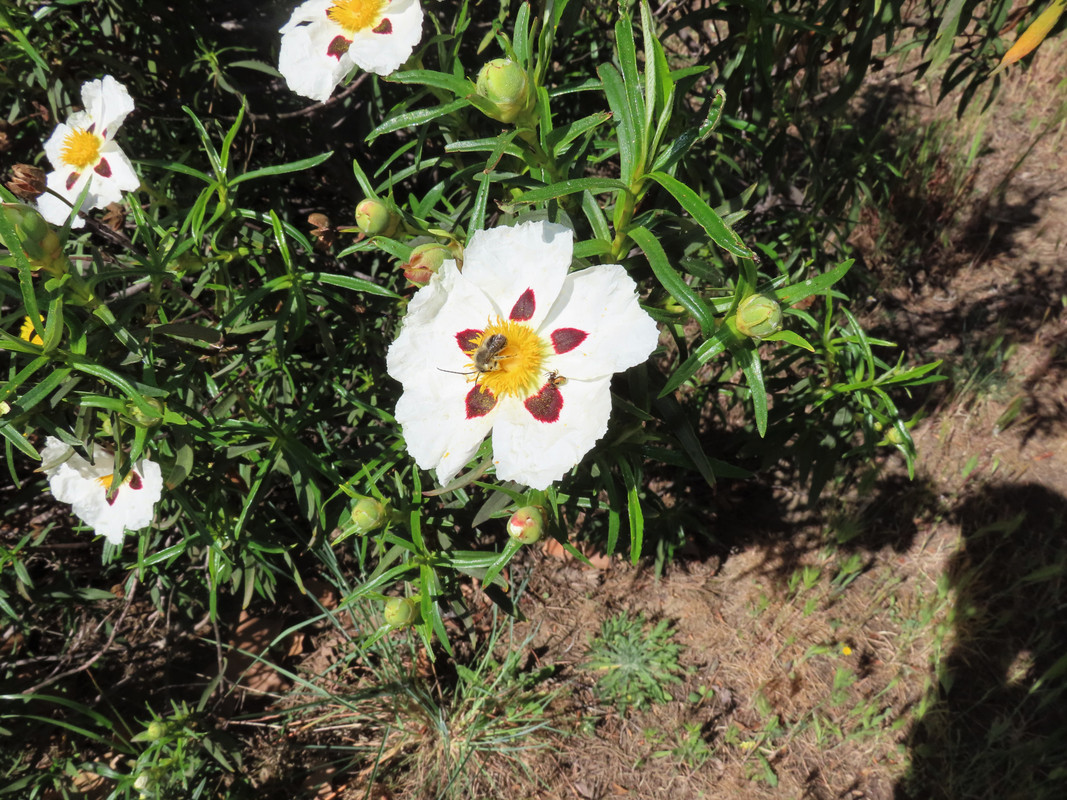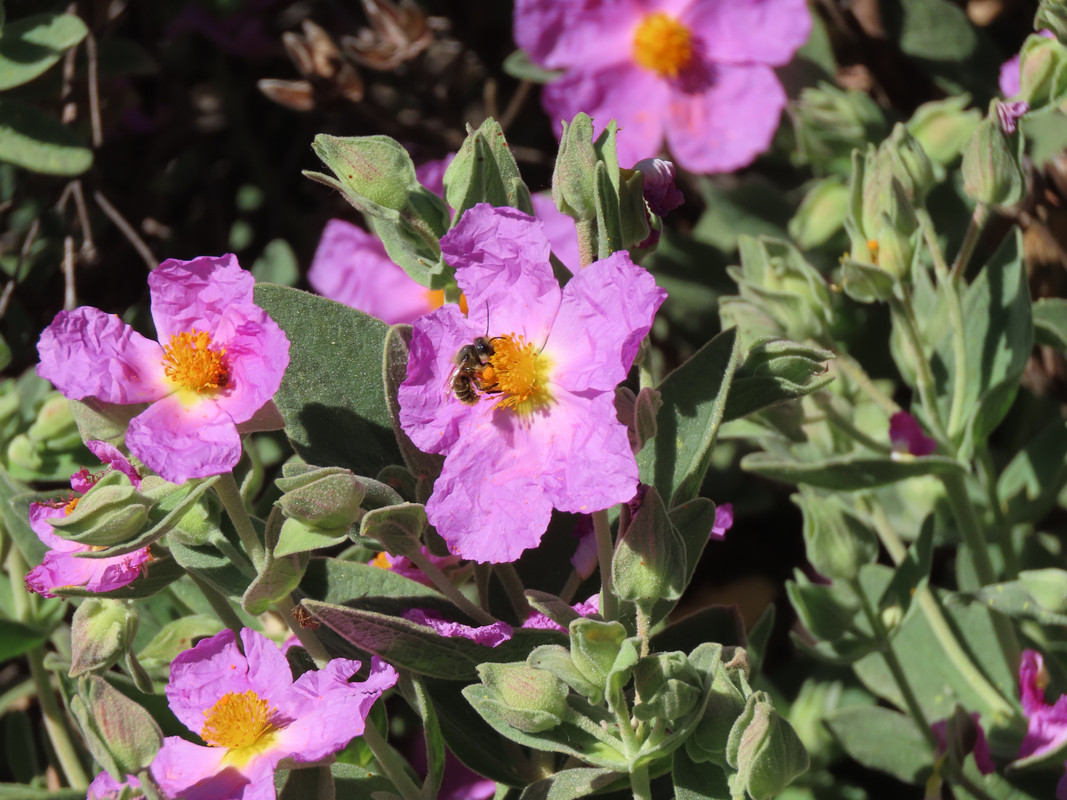Conociendo las plantas de nuestro Arboreto: Cistus albidus y Cistus ladanifer (Jaras)
Cuando llega la primavera en el mediterráneo, algunas de las plantas más comunes, pero que también llaman más la atención con sus grandes flores de textura apapelada, de color blanco, rosado o amarillo, según la especie, son lo que comúnmente se conoce como jaras. Pertenecen a la familia Cistaceae, dentro de la cual podemos encontrar los géneros Cistus, Tuberaria, Helianthemum... entre otros. Están perfectamente adaptadas a los calurosos veranos y largos periodos de sequía, y algunas son capaces de crecer en suelos pobres y drenados. Estas características sobresalen especialmente en la "jara pringosa" (Cistus ladanifer), debido a su resiliencia, capacidad para colonizar, y sus hojas angostas y coriáceas, cubiertas por una sustancia gomosa, aromática, y pegajosa conocida como ládano. El ládano reduce la perdida de agua en las hojas, pero también es inflamable. Esta cualidad le es útil a la jara pringosa ya que es una planta pirófita. Cuando se produce un incendio, las duras semillas de la jara, que antes se encontraban "adormecidas", se abren y germinan. Al encontrarse en un terreno amplio, abierto, y con poca competición, son capaces de formar matorrales casi monoespecíficos de gran extensión, y de allí su éxito.
¡Os invito a conocer algunas de nuestras especies de jaras en nuestro arboreto, seguro que os sorprenderá su belleza!

Cistus ladanifer

Cistus albidus
Referencias:
Aguayo-Villalba, A.Á., Álvarez-Gómez, C.M., Aisa-Ahmed, M. et al. Effect of fire on viability and germination behaviour of Cistus ladanifer and Cistus salvifolius seeds. Folia Geobot 56, 215–225 (2021). https://doi.org/10.1007/s12224-022-09405-2
https://antropocene.it/es/2023/01/08/cistus-ladanifer-3/
Troia, A., & Laguna, E. (2015). On the pyrophytism in the Mediterranean area. Journal of Arid Environments, 120, 1–3. https://doi.org/10.1016/J.JARIDENV.2015.04.003





